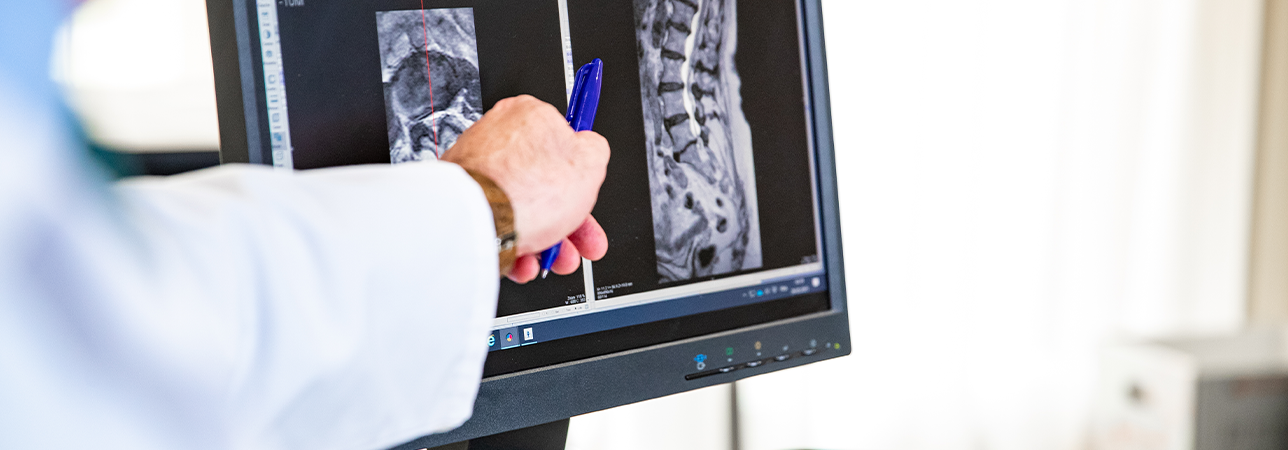
Herniated discs in the thoracic spine are rare because the rib skeleton supports the spine and reduces the load on it. In the case of a herniated disc, the outer shell of the disc tears and the gelatinous core presses on the spinal cord nerves, causing painful symptoms. The symptoms are often unspecific, possibly leading to late diagnosis. Typical causes are age-related wear and tear and heavy loads.
Herniated discs in the thoracic spine are very rare, as the rib skeleton provides additional support to the thoracic spine and thus reduces the load on the intervertebral discs. In the case of a herniated disc, the outer shell of the disc tears.The gelatinous core protrudes from the tear and presses against the nerves of the adjacent spinal cord nerves and the spinal cord itself. This pressure causes various painful symptoms.

Unfortunately, herniated discs in the thoracic spine tend to be discovered very late because the symptoms are not as specific as with other herniated discs. Those affected therefore often have to struggle with pain for a very long time before the diagnosis is made.
A herniated disc in the thoracic spine has lot of different symptoms. Typical symptoms include sensitivity to pressure on the thoracic spine or the shoulder blades. The pain radiates from there into the chest. Patients also report dizziness and nausea. In some cases, the patient may even have heart palpitations and difficulty lifting the foot. These are often mistaken for symptoms of lung, stomach or heart problems. The symptoms also depend on the location of the herniated disc.
If the herniated disc is pressing on the spinal cord, there may also be sensory disturbances, pain in the legs, and problems with urination and bowel function.
A typical cause of a herniated disc in the thoracic spine is age-related wear and tear of the discs. A herniated disc can also be the result of severe exertion, for example due to heavy lifting or permanently poor posture. Additional risk factors include weak abdominal and back muscles, as well as lack of exercise.
As the herniated disc in the thoracic spine causes specific postural errors, examining the patient’s posture enables the doctor to form a diagnosis. The diagnosis is supported with the help of magnetic resonance imaging (MRI) scans, which provide clarity about the origin of the pain.
The first step in therapy is to relieve the pain. This is achieved by using pain relievers in combination with drugs to reduce inflammation and relax the muscles. Physiotherapy is used to build specific muscles and strengthen the skeleton, which provides relief to the affected areas of the spine.
The herniated disc in the thoracic spine is rarely operated on because it is a risky and complicated procedure. Surgery is only performed if the disc is pressing extremely hard on the spinal cord or there is a risk of paraplegia.
As surgery is not necessary in most cases, there is no typical aftercare. The patient receives a plan with various measures build muscle and stabilise the skeletal system. These include, for example:
The acute phase usually lasts three to four weeks. This is followed by several weeks of exercises to strengthen the muscles.
Usually, no surgery is required. However, if the diagnosis indicates a high risk of damage to the nerves or spinal cord, surgery will be considered.